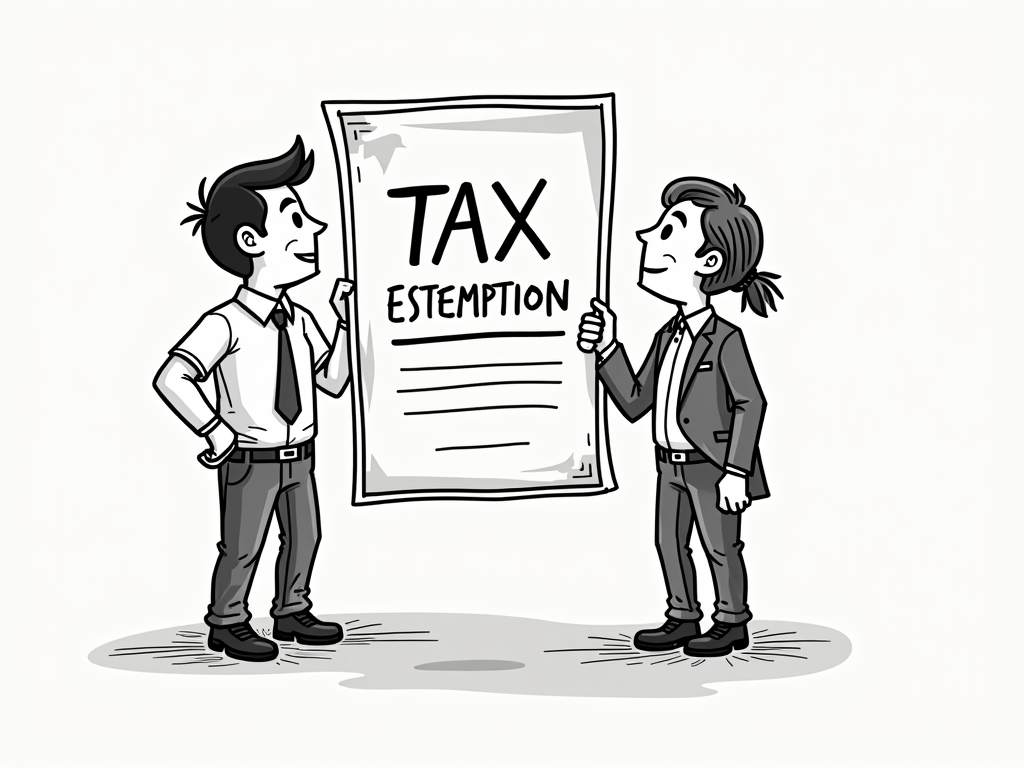
Common VAT Mistakes in Spain: Essential Strategies to Avoid Costly Penalties
Reading time: 15 minutes
Table of Contents
- Introduction: The Spanish VAT Landscape
- Spanish VAT Fundamentals
- The 7 Most Common VAT Mistakes in Spain
- Strategic Prevention: How to Safeguard Your Business
- Real-World Case Studies: Learning from Others’ Mistakes
- Leveraging Technology for VAT Compliance
- Surviving a Tax Inspection
- Conclusion: Building a Sustainable Tax Strategy
- Frequently Asked Questions
Introduction: The Spanish VAT Landscape
Feeling overwhelmed by Spanish VAT regulations? You’re in good company. The Spanish Impuesto sobre el Valor Añadido (IVA) system presents a complex challenge for businesses of all sizes, with its unique rates, reporting deadlines, and compliance requirements that seem designed to trip up even the most diligent entrepreneurs.
Here’s the straight talk: VAT compliance in Spain isn’t about perfection—it’s about strategic navigation. The Spanish Tax Authority (Agencia Tributaria) collected over €75 billion in VAT revenue in 2022, with approximately €2.5 billion coming directly from fines and penalties. This striking figure underscores a critical reality: VAT mistakes are not just common—they’re costly.
Quick scenario: Imagine you’ve just expanded your e-commerce business to Spain. You’re selling products across different VAT categories, dealing with cross-border transactions, and trying to maintain accurate records. What potential VAT pitfalls might you encounter? Let’s transform these challenges into strategic opportunities.
Spanish VAT Fundamentals
Before diving into common mistakes, let’s establish a solid foundation of Spanish VAT knowledge.
Current VAT Rates in Spain
Spain operates with three different VAT rates, each applying to specific categories of goods and services:
- Standard rate (21%): Applies to most goods and services
- Reduced rate (10%): Applies to certain categories including food products, transport, and hospitality services
- Super-reduced rate (4%): Applies to essential items like basic food products, books, newspapers, and medications
Additionally, specific regions in Spain have autonomous VAT rates—the Canary Islands operate under the IGIC system with rates ranging from 0% to 15%, while Ceuta and Melilla are exempt from VAT altogether.
Filing Requirements and Deadlines
Spanish VAT reporting operates on a strict schedule that varies based on your business size and turnover:
- Form 303: The standard quarterly or monthly VAT return
- Form 390: The annual VAT summary declaration
- Form 349: For reporting intra-EU transactions
- Immediate Supply of Information (SII): Electronic VAT ledgers for larger companies
For most businesses, quarterly filing deadlines fall on the 20th of the month following each quarter (April, July, October, and January). Missing these deadlines is one of the most common—and preventable—mistakes leading to penalties.
The 7 Most Common VAT Mistakes in Spain
Let’s identify the VAT missteps that frequently lead to costly penalties and disruptions.
1. Incorrect Application of VAT Rates
The diversity of Spanish VAT rates creates ample room for error. According to a 2022 survey by the Spanish Association of Tax Advisors, 43% of businesses have applied incorrect VAT rates at least once in the past two years.
A particularly troublesome area involves restaurant services, where food consumed on-premises attracts the 10% reduced rate, while takeaway food might qualify for different rates depending on the specific items. Similarly, many businesses struggle with digital products, where determining the applicable rate can be especially challenging.
Pro Tip: Create detailed product/service categorization matrices that map each offering to its correct VAT rate, and review these quarterly with a tax professional.
2. Missing or Late Tax Declarations
Timing is everything in Spanish VAT compliance. Late declarations consistently rank among the top reasons businesses face penalties. The Spanish Tax Authority applies a tiered penalty system for late filings:
- Delays up to 3 months: Surcharges of 5%-10% of the tax due
- Delays from 3-6 months: Surcharges of 15%
- Delays from 6-12 months: Surcharges of 20%
- Delays over 12 months: 20% surcharge plus interest
As Teresa González, Tax Partner at Garrigues, explains: “Many businesses, especially international ones, underestimate the strictness of Spanish filing deadlines. Unlike some countries where grace periods exist, Spanish authorities typically enforce penalties automatically when deadlines are missed.”
3. Incomplete or Inaccurate Invoice Requirements
Spanish VAT regulations stipulate specific invoice elements that must be present for VAT reclamation. Common invoice errors include:
- Missing the correct legal business name and NIF (tax ID number)
- Failing to include the applicable VAT rate clearly
- Omitting invoice sequence numbers
- Incorrect date formats (Spain uses DD/MM/YYYY)
- Missing address information for both parties
These seemingly minor details can result in rejected VAT recovery claims and potential penalties during inspections.
4. Improper VAT Treatment of International Transactions
Cross-border transactions create particular complexity. Common mistakes include:
- Incorrectly applying VAT to B2B sales within the EU
- Failing to verify and document valid VAT ID numbers of EU customers
- Mishandling import VAT procedures
- Overlooking reverse charge mechanisms
With Spain’s strategic position as a gateway to European markets, these international transaction mistakes are particularly common among expanding businesses.
5. Failure to Maintain Adequate Documentation
The Spanish Tax Authority requires businesses to maintain comprehensive records for at least four years. During inspections, inadequate documentation is a frequent finding, particularly regarding:
- Supporting evidence for zero-rated exports
- Proof of transport for intra-community supplies
- Documentation justifying VAT exemptions
- Records of corrective invoices and credit notes
“Documentation isn’t just about satisfying regulatory requirements,” notes Carlos Martínez, former Tax Inspector. “It’s your primary defense during an inspection. Without it, inspectors may make assessments based on estimation methods that rarely favor the taxpayer.”
6. Incorrect VAT Recovery on Expenses
Not all VAT paid is recoverable in Spain. Businesses frequently attempt to recover VAT on:
- Entertainment expenses (partially restricted)
- Passenger vehicles (subject to 50% limitation in many cases)
- Housing and accommodation (generally not deductible)
- Gifts exceeding €200 per recipient annually
These improper deduction attempts often trigger detailed inspections of all VAT returns.
7. Failing to Properly Implement the SII System
Large businesses and those opting for monthly VAT returns must comply with the Immediate Supply of Information (SII) system, which requires near real-time electronic reporting of invoice data.
The technical requirements for SII compliance are rigorous, with specific XML formats and four-day reporting windows. Implementation errors commonly lead to automatic fines of €600 per quarter for essential data errors.
Strategic Prevention: How to Safeguard Your Business
Now, let’s explore systematic approaches to prevent these common VAT mistakes.
Structured Compliance Calendar
A robust compliance calendar serves as your first line of defense. This should include:
- All filing deadlines with 7-day advance reminders
- Quarterly VAT rate review sessions
- Monthly internal audit checks
- Annual comprehensive review with a tax specialist
Digital calendar integration with automatic alerts to multiple team members helps ensure deadlines are never missed due to staff absences or transitions.
Staff Training and Education
Invest in regular training for all personnel involved in financial transactions. This includes:
- Quarterly refresher sessions on VAT fundamentals
- Specialized training for staff handling international transactions
- Real-case scenario exercises based on common industry mistakes
- Updates on regulatory changes from the Tax Authority
Pro Tip: Create a simplified one-page VAT decision tree for common transactions that staff can reference quickly when processing sales or purchases.
Real-World Case Studies: Learning from Others’ Mistakes
Case Study 1: The Restaurant Chain Penalty
A mid-sized restaurant chain with 12 locations across Spain found itself facing penalties of €75,000 after a routine tax inspection revealed systematic misapplication of VAT rates. The company had been applying the reduced 10% rate to all food sales, including alcoholic beverages and specialty premium items that required the standard 21% rate.
The business had grown rapidly and relied on an outdated point-of-sale system that didn’t differentiate between VAT categories properly. Additionally, their accounting team lacked specific Spanish VAT training.
Resolution and Learning: The company implemented a comprehensive solution involving:
- Upgrading their POS system with proper VAT rate mapping
- Creating detailed product categorization guidelines
- Implementing quarterly internal audits
- Engaging a Spanish tax advisor for staff training
While they couldn’t avoid the penalties for past mistakes, these measures ensured future compliance and actually improved their profit margins through more accurate pricing that accounted for correct VAT rates.
Case Study 2: The E-commerce VAT Crisis
An international e-commerce business selling clothing accessories to Spanish consumers operated for 18 months without registering for Spanish VAT, incorrectly believing their sales fell below the distance selling threshold.
When they finally consulted a local tax advisor, they discovered they had exceeded the threshold in their fifth month of operation and now faced significant penalties. The final assessment included:
- €42,000 in unremitted VAT
- €18,000 in late-payment penalties
- €12,000 in interest charges
- Potential reputational damage with Spanish customers
Resolution and Learning: Beyond settling their tax liability, the company implemented several preventive measures:
- Monthly sales threshold monitoring by country
- Automated VAT registration triggers based on approaching thresholds
- Country-by-country VAT compliance checklists
- Quarterly review with international tax specialists
This case highlights the importance of proactive compliance monitoring, especially for cross-border sellers.
Leveraging Technology for VAT Compliance
Modern tax technology offers powerful tools to minimize human error in VAT management.
Automation Solutions
Specialized software can dramatically reduce common VAT mistakes through:
- Automated rate application based on product categories
- Built-in validation of EU VAT numbers
- Deadline tracking and automated filing reminders
- Invoice validation to ensure all required elements are present
- Digital record-keeping compliant with Spanish requirements
According to a 2023 study by the European Tax Technology Association, businesses using specialized VAT software reduced their error rates by an average of 87% and their penalty exposure by 92%.
Comparative Analysis of VAT Management Approaches
| Compliance Aspect | Manual Approach | Generic Accounting Software | Specialized VAT Software | Outsourced to Spanish Experts |
|---|---|---|---|---|
| Rate Application Accuracy | Low – High human error risk | Medium – Basic rules only | High – Automated with regular updates | High – Expert knowledge |
| Deadline Compliance | Low – Relies on memory | Medium – Basic calendar functions | High – Automated alerts and tracking | High – Managed by specialists |
| Documentation Quality | Low – Inconsistent standards | Medium – Templates available | High – Standardized with validation | High – Professional standards |
| Cost | Low initial/High risk cost | Medium initial/Medium risk cost | High initial/Low risk cost | Highest ongoing/Lowest risk cost |
| International Transaction Handling | Very Low – Complex manual rules | Low – Limited international features | High – Built-in cross-border logic | High – Expert knowledge |
Pro Tip: For businesses with more than 100 monthly transactions in Spain, the investment in specialized VAT software typically pays for itself within 8-12 months through error reduction and time savings.
Surviving a Tax Inspection
Even with the best prevention, tax inspections happen. Here’s how to navigate them effectively.
Preparation Essentials
When notified of an upcoming inspection, take these immediate steps:
- Engage professional representation – Ideally a tax advisor with specific Spanish tax inspection experience
- Conduct a pre-inspection audit – Review your VAT returns for the inspection period before authorities arrive
- Organize documentation systematically – Prepare files by tax period with all supporting documents readily accessible
- Prepare staff – Brief team members who may need to provide information or explanations
As Miguel Ángel Sánchez, former Tax Inspector now consulting for businesses, advises: “The inspector’s first impression matters tremendously. A well-organized response to their initial document requests often sets a positive tone for the entire inspection.”
During the Inspection
Follow these guidelines when dealing with tax inspectors:
- Designate a single point of contact for all inspector communications
- Respond promptly to information requests with precisely what was asked for
- Maintain detailed records of all documents provided
- Request clarification when inspection requests are unclear
- Avoid volunteering additional information beyond what is specifically requested
Remember that inspectors are primarily looking for concrete documentation supporting your VAT treatments—theoretical explanations rarely suffice.
Conclusion: Building a Sustainable Tax Strategy
Spanish VAT compliance doesn’t need to be a constant source of anxiety and risk. By understanding the most common mistakes and implementing structured prevention strategies, businesses can transform VAT management from a liability into a controlled, systematic process.
The key elements of sustainable Spanish VAT compliance include:
- Regular staff training and clear internal procedures
- Appropriate technology investments based on transaction volume
- Proactive compliance calendars with redundant reminders
- Periodic expert review of VAT treatment decisions
- Robust documentation systems that exceed minimum requirements
Well, here’s the straight talk: Successful Spanish VAT management isn’t about achieving perfect compliance in theory—it’s about implementing practical systems that prevent the most common and costly mistakes in practice.
As you refine your approach to Spanish VAT, remember that the goal isn’t just avoiding penalties—it’s creating business certainty that allows you to focus on growth rather than tax concerns.
Frequently Asked Questions
What are the most severe penalties for VAT non-compliance in Spain?
The Spanish Tax Authority can impose penalties of up to 150% of the unpaid tax amount for serious cases involving fraud or deliberate evasion. Additionally, systematic non-compliance can result in criminal charges for tax fraud when the unpaid amount exceeds €120,000. Beyond financial penalties, businesses with significant VAT irregularities may face operational disruptions through precautionary measures like account freezes or asset seizures during investigations. These severe consequences are typically reserved for cases involving intentional misconduct rather than good-faith errors.
How can foreign businesses effectively manage Spanish VAT when they don’t have local staff?
Foreign businesses can successfully manage Spanish VAT compliance through a combination of strategic outsourcing and technology. The most effective approach involves appointing a Spanish tax representative (not legally required but highly beneficial) who can handle direct communications with the Tax Authority in Spanish. Additionally, implementing cloud-based VAT compliance software with Spanish-specific functionality allows your existing finance team to maintain oversight while ensuring local compliance. For periodic transactions, consider engagement models where Spanish tax advisors provide quarterly review services rather than full outsourcing, giving you both expertise and cost efficiency.
What documentation should I prioritize keeping to defend against potential VAT inspections?
Focus on maintaining comprehensive evidence for transactions with special VAT treatments, as these attract the most scrutiny. This includes complete proof-of-delivery documentation for intra-EU supplies (CMRs, bills of lading, signed delivery notes), detailed evidence supporting zero-rated exports (customs documentation, proof of transport outside the EU), and clear business purpose documentation for any partially-restricted expenses where VAT is being recovered. Additionally, maintain an audit trail showing VAT validation checks for B2B EU customers and systematic rate determination decisions for complex products or services. Store these records in an organized, easily accessible system that allows rapid production of specific documents when requested by inspectors.



